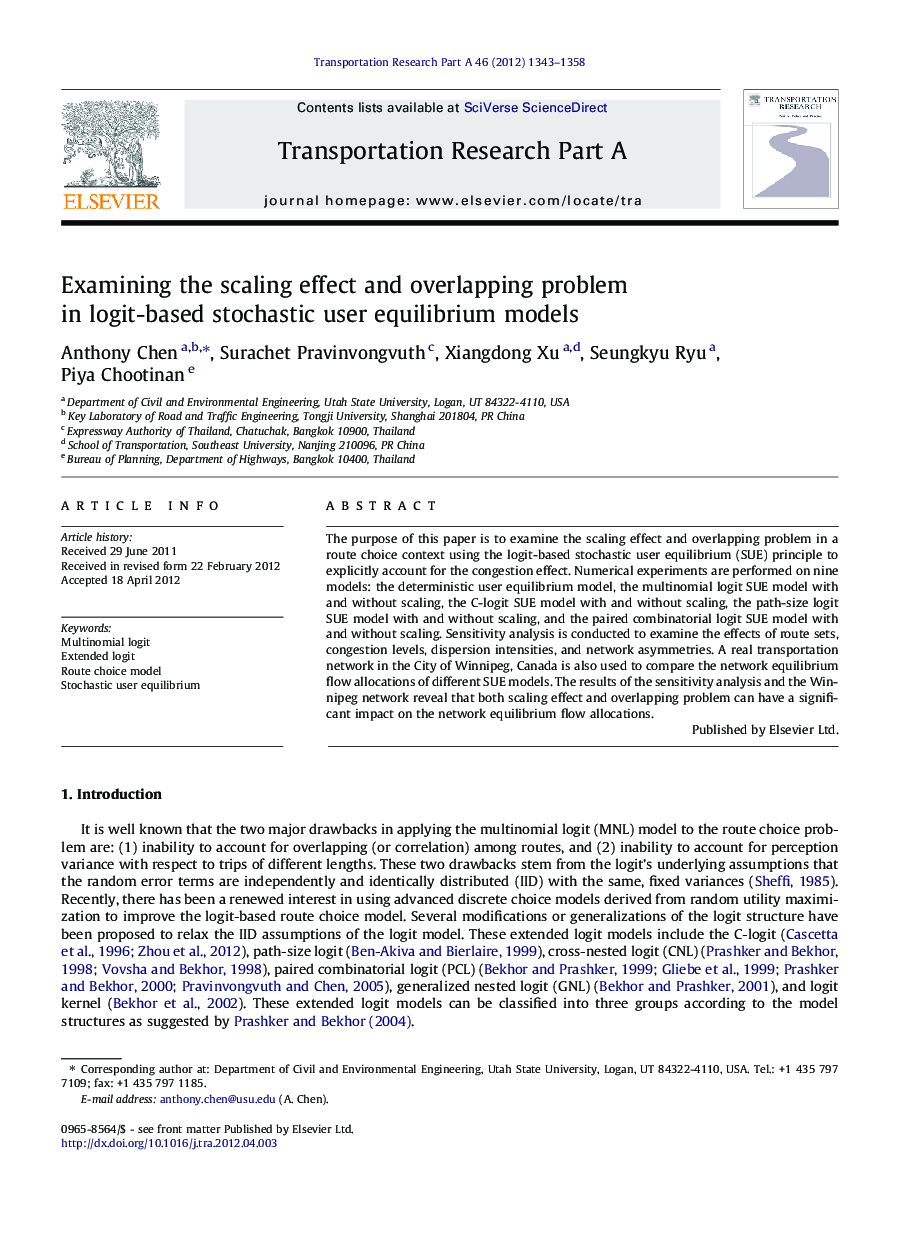| کد مقاله | کد نشریه | سال انتشار | مقاله انگلیسی | نسخه تمام متن |
|---|---|---|---|---|
| 310836 | 533376 | 2012 | 16 صفحه PDF | دانلود رایگان |

The purpose of this paper is to examine the scaling effect and overlapping problem in a route choice context using the logit-based stochastic user equilibrium (SUE) principle to explicitly account for the congestion effect. Numerical experiments are performed on nine models: the deterministic user equilibrium model, the multinomial logit SUE model with and without scaling, the C-logit SUE model with and without scaling, the path-size logit SUE model with and without scaling, and the paired combinatorial logit SUE model with and without scaling. Sensitivity analysis is conducted to examine the effects of route sets, congestion levels, dispersion intensities, and network asymmetries. A real transportation network in the City of Winnipeg, Canada is also used to compare the network equilibrium flow allocations of different SUE models. The results of the sensitivity analysis and the Winnipeg network reveal that both scaling effect and overlapping problem can have a significant impact on the network equilibrium flow allocations.
► The scaling effect and overlapping problem are examined using the logit-based SUE models.
► The overlapping problem is handled by the recently developed extended logit models.
► The O–D specific scaling factor is used to partially relax the identical trip length variance problem.
► Numerical experiments are performed on eight logit-based SUE models.
► The effects of route sets, congestion levels, dispersion intensities, and network asymmetries are also examined.
Journal: Transportation Research Part A: Policy and Practice - Volume 46, Issue 8, October 2012, Pages 1343–1358